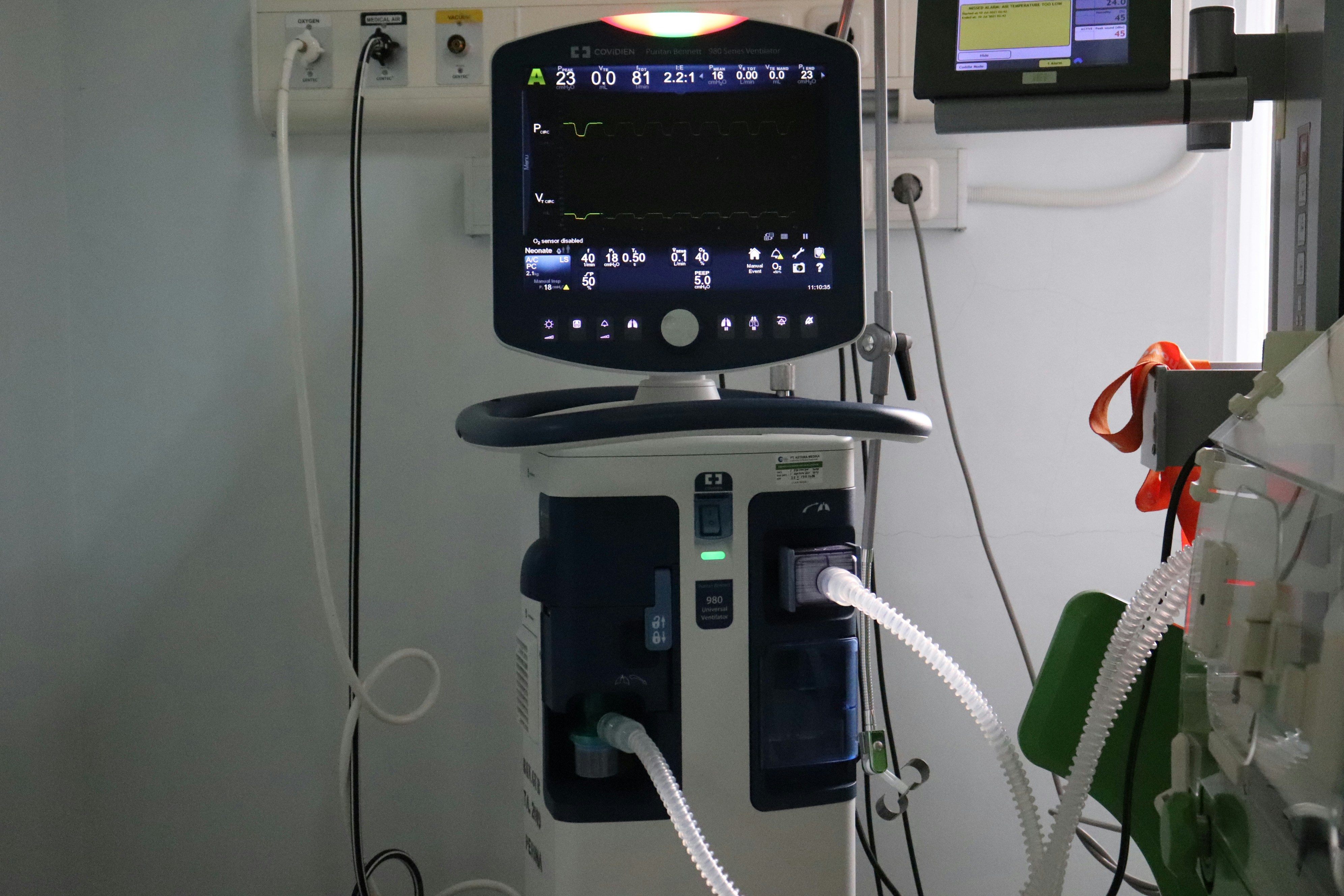
Quantum-Enhanced AI in Medical Technology—Transforming Healthcare for the Future
Medical technology—or medtech—stands at the forefront of redefining how we diagnose, treat, and manage illness. From MRI scanners that peer deep into our bodies to personalised therapy platforms that predict disease risk, medtech solutions already shape modern healthcare. Yet as the global population grows and health needs become more complex, conventional computational methods face staggering challenges in analysing massive biological datasets, simulating intricate disease pathways, and accelerating drug discovery. This is where quantum computing and Artificial Intelligence (AI) converge to spark a new wave of quantum-enhanced AI—unlocking innovation in medical technology like never before.
Why does quantum matter for medtech? Traditional supercomputers rely on binary bits (0 or 1). Quantum computers harness qubits, capable of existing in multiple states simultaneously (superposition) and becoming interlinked (entanglement). The result? Potential exponential or quadratic speed-ups for certain algorithms and simulations—particularly those that involve high-dimensional data, complex protein folding, or combinatorial searches for novel drugs.
In parallel, AI—especially machine learning—has already revolutionised medical imaging, diagnostics, and patient monitoring. However, standard AI approaches often choke on the vast computational loads inherent to genome analysis, multi-omics data, or advanced robotics. Quantum computing promises to offload or accelerate some of these computationally intense tasks, enabling more powerful models, faster results, and the potential to discover new correlations hidden within enormous datasets.
In this article, we will:
Examine the current landscape of medical technology, highlighting computational barriers that hamper progress.
Demystify quantum computing and its fundamental differences from classical systems.
Explore how quantum-enhanced AI can reshape medtech applications—from drug discovery to diagnostics and beyond.
Dive into real-world pilot projects and potential breakthroughs on the horizon.
Discuss challenges (like hardware maturity, data encoding, ethics, and patient privacy) and how the industry might overcome them.
Highlight career paths, roles, and skill sets that could define the next generation of medtech professionals.
If you’re involved in medical device development, healthcare data analysis, or simply curious about the future of medicine, read on. Quantum-enhanced AI has the potential to supercharge healthcare innovation, improving patient outcomes while driving exciting new career opportunities.
1. The Medical Technology Landscape: Promise and Complexity
1.1 Modern Medtech Achievements
In the 21st century, advances in medtech have reshaped entire facets of healthcare:
Non-Invasive Imaging: MRI, CT, and ultrasound scanners now produce high-resolution images that guide surgical planning or detect early-stage diseases.
Wearable Devices: Smart watches and biosensors track real-time vitals (heart rate, blood pressure, ECG data), offering continuous remote patient monitoring.
Robotic Surgery: Systems like the da Vinci robot empower surgeons with enhanced precision, reducing invasive procedures and recovery times.
Automated Diagnostics: AI-driven analysis of pathology slides, X-rays, and colonoscopies flags anomalies faster than human examiners, freeing clinicians to focus on treatment.
Yet as patient volumes surge, diseases become more complex (e.g., multi-factorial chronic conditions), and personalised medicine becomes standard, the computational demands of medtech escalate dramatically.
1.2 Current Computational Bottlenecks
Data Explosion: Genomic sequencing, multi-omics, and patient wearables generate petabytes of data. Processing, integrating, and interpreting these streams in real-time is daunting.
Complex Biological Systems: Simulating biochemical processes (e.g., protein-ligand binding or whole-organ function) involves an astronomical number of variables. Traditional supercomputers can struggle to compute interactions accurately or at scale.
AI Model Size & Training Times: Large neural networks for image segmentation or predictive analytics can require days or weeks on GPU clusters—slowing research and development in fast-moving healthcare environments.
Cost and Infrastructure: Expanding on-premises compute or renting cloud HPC resources can be prohibitively expensive for many healthcare institutions, hindering broad adoption of data-driven strategies.
In light of these issues, quantum computing emerges as an enticing solution, potentially slashing compute times or enabling new algorithms that classical machines find intractable.
2. Quantum Computing: A Crash Course
2.1 Bits vs. Qubits
Classical computers process bits—each distinctly 0 or 1. Quantum computers use qubits:
Superposition: A single qubit can represent 0 and 1 simultaneously, allowing multiple states to be explored in parallel.
Entanglement: Two or more qubits can become entangled, so measuring one instantly affects the state of the other, enabling intricate correlation-based computations impossible in classical systems.
By leveraging these quantum effects, certain algorithms—like factoring large numbers (Shor’s Algorithm) or searching unstructured databases (Grover’s Algorithm)—demonstrate dramatic speed-ups over classical approaches.
2.2 The NISQ Era
We’re still in the NISQ (Noisy Intermediate-Scale Quantum) phase. Modern quantum processors might only have tens or a few hundred qubits, subject to noise and decoherence. This can introduce errors or limit execution time. Achieving fault-tolerant quantum computing, with large qubit counts and robust error correction, remains a target for the coming decade or more. Nonetheless, even smaller or “noisy” devices have shown promise in specialised tasks—especially those relevant to complex, quantum-level phenomena like molecular modelling, which is crucial for medtech R&D.
3. Quantum-Enhanced AI: A Transformational Pairing
3.1 Bridging AI and Quantum
Quantum-enhanced AI merges quantum computing with machine learning pipelines to achieve:
Speedier Training: Offload the most computation-heavy steps (e.g., matrix inversions, large-scale optimisation) to quantum hardware.
New Model Architectures: Design quantum neural networks (QNNs) that exploit qubit superpositions and entanglements for richer data representations.
Improved Sampling: Efficient sampling of high-dimensional distributions, enabling AI models to search solution spaces more effectively—particularly relevant for disease modelling or drug interactions.
3.2 Why It Matters in Medtech
Medical data is inherently high-dimensional, from hundreds of thousands of genetic markers to multi-modal imaging (CT, MRI, PET) plus electronic health records, lifestyle factors, and more. Classical AI can handle only subsets or approximations of these complex relationships. Quantum computing’s ability to explore vast configuration spaces could provide:
Faster Insights: Rapid model building for diagnostics or triaging, reducing time to clinical decision-making.
Personalised Treatment Optimization: Large-scale combinatorial searches to find the best drug regimen or therapy path for individual patients.
More Accurate Simulations: Quantum-based simulation of molecular and protein dynamics may guide custom interventions or advanced medical device coatings.
4. Applications: Quantum-Enhanced AI in Medical Technology
4.1 Drug Discovery and Pharmacology
Drug development is time-consuming and costly. Researchers must explore chemical libraries, test potential molecules, and simulate how each might bind to target proteins. Quantum-enhanced AI can:
Accelerate Virtual Screening: Quantum computers can rapidly evaluate molecular interactions and binding affinities, narrowing candidate compounds before lab testing.
Enable Complex Pharmacokinetics Modelling: Merging patient data with quantum-level simulations reveals how drugs distribute, metabolise, and excrete, boosting personalised medicine.
Improve Polypharmacy Analysis: Patients often take multiple drugs simultaneously. Quantum-based approaches can handle combinatorial explosion when modelling drug-drug interactions.
4.2 Medical Imaging and Diagnostics
Medical imaging (CT, MRI, ultrasound) often relies on machine learning for segmentation, anomaly detection, and reconstruction:
Quantum-Assisted Image Reconstruction: For advanced imaging modalities like MRI, quantum algorithms might reconstruct high-fidelity images faster from sparse data, reducing scanning times.
Enhanced Pattern Recognition: Quantum-based neural networks could spot subtle signs of disease—e.g., microcalcifications or small tumour masses—in complex images more reliably.
Multi-Omics and Imaging Fusion: Combining genomic or proteomic data with high-dimensional imaging might become feasible, discovering previously missed correlations.
4.3 Genomic Analysis and Personalised Medicine
The human genome comprises billions of base pairs, and each individual’s genetic profile can interact with environmental and epigenetic factors:
Quantum ML for Variant Analysis: Identify pathogenic genetic variants from millions of benign ones, accelerating rare disease diagnostics.
Polygenic Risk Scoring: Large population-scale data sets can be processed via quantum subroutines for more accurate risk stratification.
Real-Time Genomics at Point-of-Care: Potentially compress processing times during acute scenarios (e.g., neonatal ICU) where quick diagnoses are lifesaving.
4.4 Surgical Robotics and Real-Time Decision Support
Robotic surgery depends on sensor fusion, force feedback, and AI-based guidance:
Quantum-Enhanced Control Systems: Manage real-time data from multiple sensors, optimising robotic movements, minimising tremors, and adapting to tissue variability.
Optimised Surgical Path Planning: Some surgeries benefit from complex route planning, e.g., minimising incisions or nerve damage, which can be tackled by quantum-assisted optimisation.
Intraoperative Diagnostics: Quickly interpret morphological changes or on-the-fly pathology slides with quantum speed-ups, offering surgeons real-time guidance.
4.5 Protein Folding and Synthetic Biology
Protein folding is notoriously complex. Even classical AI breakthroughs (like DeepMind’s AlphaFold) rely on extensive GPU power:
Quantum Simulations of Protein Structures: Achieve higher-fidelity models of protein-ligand binding or misfolding (crucial for diseases like Alzheimer’s).
Rational Design of Biological Systems: Synthetic biology can benefit from quantum-based searches for novel pathways or organism engineering, especially for advanced medical therapies (e.g., CAR-T cell enhancements).
5. Challenges and Limitations
5.1 Hardware Maturity
Although quantum computing is rapidly progressing, near-term quantum machines remain:
Noisy: Qubits quickly lose coherence, introducing errors.
Limited in Qubit Count: Large protein or multi-omics problems may still exceed current quantum capacity.
Expensive & Scarce: Access often requires paying for cloud-based quantum services, which can be cost-prohibitive for many medtech start-ups or hospital systems.
5.2 Data Encoding and Integration
Loading high-dimensional medical data (genomic sequences, large imaging sets) into quantum states can be non-trivial. Efficient encoding strategies—like amplitude encoding or basis encoding—require sophisticated techniques. Moreover, bridging classical HPC resources (for data pre-processing) with quantum hardware (for subroutines) is complex.
5.3 Regulatory and Ethical Hurdles
Healthcare is strictly regulated, meaning:
Patient Data Confidentiality: GDPR and NHS data governance rules in the UK, HIPAA in the US—quantum technology must ensure compliance if it processes patient data.
Approval Pathways: The MHRA (Medicines and Healthcare products Regulatory Agency) and similar bodies will require robust validation for quantum-driven diagnostics or devices.
Bias and Fairness: AI models risk embedding biases if trained on non-representative data. Quantum speed-ups don’t necessarily address these ethical pitfalls.
5.4 Skilled Workforce
Quantum and medtech each require specialised knowledge. Finding professionals who blend quantum computing fundamentals, data science, and healthcare domain expertise is challenging. Upskilling existing medical technology teams or recruiting from niche fields might be essential.
6. Designing Quantum-Enhanced Medtech Workflows
6.1 Hybrid Architecture Approach
Data Acquisition & Preprocessing: Collect imaging scans, genomic data, EHR records, etc., cleaning and normalising them using classical HPC frameworks.
Quantum Subroutine Offload: For specific tasks (e.g., advanced feature extraction, molecular simulation, large-scale combinatorial search), route data to quantum hardware.
Classical-Quantum Integration: Feed quantum outputs (like refined parameters, simulations) back into a classical ML pipeline.
Inference & Clinical Decision: Deploy final models or results to clinicians, robotic systems, or diagnostic devices in hospitals or at the patient bedside.
6.2 Tools & Frameworks
Qiskit (IBM): Offers modules for quantum chemistry, including potential expansions for healthcare.
TensorFlow Quantum (Google): Integrates Cirq-based quantum operations with AI frameworks, suitable for building hybrid neural networks.
PennyLane (Xanadu): Focuses on differentiable quantum circuits, bridging with PyTorch or TensorFlow for quantum ML experiments.
Azure Quantum / Amazon Braket: Cloud platforms with managed quantum backends, easing the integration for medtech R&D teams.
6.3 Best Practices
Prototype on Quantum Simulators: Before using real quantum hardware (with limited qubits and high noise), validate your approach using simulators to debug logic.
Identify High-Value Bottlenecks: Don’t shift everything to quantum. Pinpoint tasks genuinely suited for quantum speed-ups, like certain protein simulations or large-scale feature selection.
Collaborate Across Disciplines: Team up with quantum physicists, ML engineers, medical researchers, and clinicians to ensure the pipeline aligns with real-world healthcare needs.
7. Emerging Roles and Career Opportunities
7.1 Quantum Medtech Researcher
Merges quantum algorithm design with medical domain insights. Responsibilities include:
Algorithm Development: Designing quantum routines for biomolecular simulations or advanced diagnostics.
Validation & Benchmarking: Comparing classical vs. quantum performance on relevant medical data sets.
Stakeholder Liaison: Collaborating with clinicians, hospital IT, regulators to ensure solutions are clinically valuable and compliant.
7.2 Quantum-AI Software Developer
Focuses on coding, optimising, and deploying hybrid pipelines:
Quantum Circuit Implementation: Writing circuits in Qiskit, Cirq, or similar SDKs for medical data tasks.
Machine Learning Integration: Building neural network architectures that incorporate quantum subroutines for training or inference.
Continuous Integration (CI/CD): Managing version control and testing for quantum programs, essential in regulated environments.
7.3 Clinical Data Scientist with Quantum Fluency
Medical domain experts or data scientists with upskilling in quantum methods:
Data Governance & Quality: Ensuring compliance with health data regulations, curation of training sets, and interpretability of quantum-boosted models.
Exploratory Analysis: Running pilot projects to assess how quantum might improve current clinical analytics.
Feedback Loop to Clinicians: Translating quantum-driven insights back to healthcare providers for improved diagnostics or treatments.
7.4 Post-Quantum Security Specialist (Healthcare)
As quantum computing threatens classical cryptography, safeguarding electronic health records (EHRs) is critical:
Post-Quantum Encryption Rollout: Deploying algorithms resistant to quantum attacks, protecting patient data integrity.
Infrastructure Upgrades: Assessing vulnerabilities in medtech devices, hospital networks, and telemedicine platforms.
Regulatory Compliance: Ensuring NHS guidelines or other standards are met while adopting post-quantum security measures.
7.5 Bioinformatics Engineer (Quantum-Ready)
Bioinformatics is already data-heavy. Quantum expansion includes:
Genomic & Multi-Omics Integration: Offloading advanced clustering or feature selection to quantum hardware.
Systems Biology Modelling: Real-time simulation of metabolic or regulatory networks to guide new therapies.
Collaboration with Pharma: Working with drug companies on quantum-based pipelines for faster candidate screening.
8. Addressing Ethical & Practical Concerns
8.1 Patient Privacy
Deploying quantum solutions in the cloud or collaborating with third-party quantum providers raises concerns about data sovereignty and anonymisation. Rigorous encryption, secure protocols, and on-premises quantum solutions (when feasible) can help mitigate data breaches.
8.2 Bias in Quantum-Enhanced AI
Quantum computing doesn’t automatically resolve biases inherent in AI models or datasets. If training data for a diagnostic tool underserves certain demographics, quantum speed-ups merely replicate that bias faster. Ongoing efforts in fairness and interpretability remain vital.
8.3 Validation and Clinical Trials
Healthcare solutions must undergo clinical validation to ensure safety and efficacy. Quantum-based systems may be novel and less transparent, complicating regulatory approvals. Collaboration with bodies like MHRA (in the UK) or the FDA (in the US) is paramount to develop frameworks for approving quantum-driven medical devices or diagnostics.
8.4 Cost-Efficiency & Scalability
Quantum hardware access is costly; not every hospital can realistically implement quantum solutions. As a result, initial adoption may cluster in research hospitals, large pharma, or dedicated HPC labs. Over time, costs could decline, broadening adoption in smaller healthcare settings.
9. Future Outlook: 1, 5, and 10 Years
9.1 Near-Term (1–2 Years)
Pilot Projects Multiply: Universities, start-ups, and major healthcare providers initiate small-scale proofs of concept—e.g., quantum-boosted drug screening.
Quantum SDK Refinement: IBM, Google, Microsoft, Amazon, and start-ups enhance frameworks like Qiskit, Cirq, and PennyLane for medtech tasks, possibly adding domain-specific libraries.
Growing Community: Conferences, hackathons, and grants (especially from public health bodies) encourage quantum-medtech exploration.
9.2 Mid-Term (3–5 Years)
Use Cases Expand: Early success stories in drug discovery or genomics might spur more investment.
Increased Qubit Counts: With better error mitigation, quantum machines might handle moderate-scale molecular or imaging tasks.
Regulatory Engagement: Governments and regulators draft guidelines around quantum-based diagnostics, ensuring compliance and patient safety.
9.3 Long-Term (5–10+ Years)
Mainstream Quantum-ML Adoption: Hospitals and research centres might routinely employ quantum-accelerated AI for advanced diagnostics, real-time robotics, or multi-omics integration.
High-Impact Breakthroughs: Uncovering new classes of drugs, custom implants, or personalised treatment regimens that classical methods could not have predicted.
Global Health Equity: Quantum solutions deployed via cloud-based networks may democratise access to cutting-edge diagnostics, bridging gaps in underserved areas—though ensuring affordability remains key.
10. Conclusion
Medical technology is on the cusp of a quantum leap—both metaphorically and literally. As quantum computing matures and merges with AI, complex medical challenges once deemed unsolvable may yield to new techniques. The promise of quantum-enhanced AI extends across drug discovery, genomics, medical imaging, and surgical robotics, potentially slashing development timelines, improving accuracy, and enabling hyper-personalised healthcare.
Yet this vision comes with caveats: today’s quantum hardware is noisy and limited in scale, requiring careful selection of high-value tasks. Ethical and regulatory frameworks must evolve to ensure that patient data remains confidential and that algorithmic biases do not jeopardise care quality. Equally important is the need for professionals—ranging from quantum software engineers to bioinformaticians—to collaborate seamlessly with clinicians, researchers, and regulators.
If you’re ready to be at the cutting edge of healthcare innovation, now is the time to explore or expand your skill set in quantum computing, machine learning, and medtech. Whether you’re a data scientist eager to leverage quantum APIs or a medical professional envisioning next-gen diagnostics, opportunities abound as these fields converge. For the latest roles and insights in this transformative domain, visit www.medicaltechnologyjobs.co.uk. Embrace the future of healthcare—quantum-enhanced AI might just revolutionise how we diagnose and treat disease, saving lives and redefining patient care worldwide.


